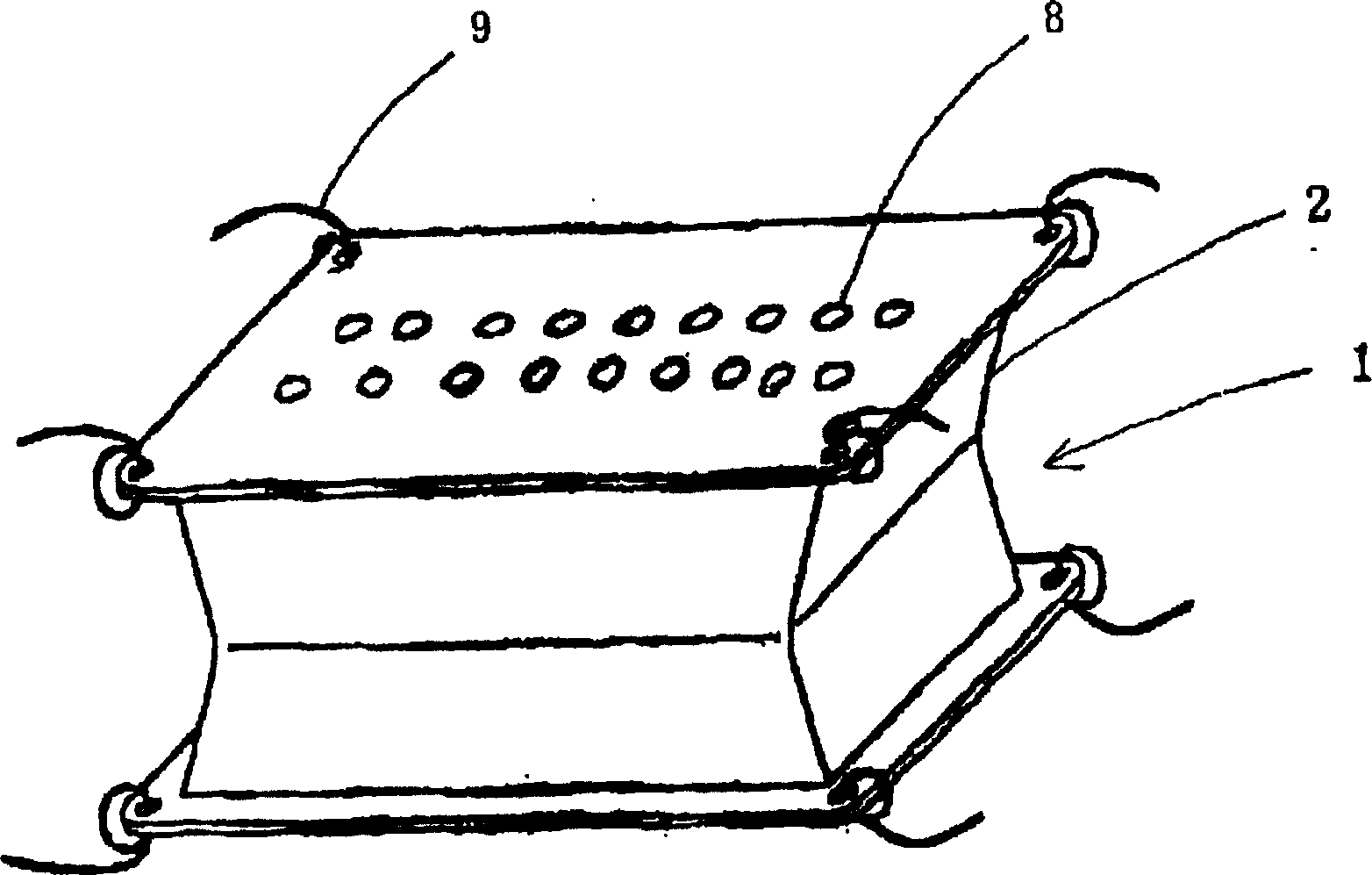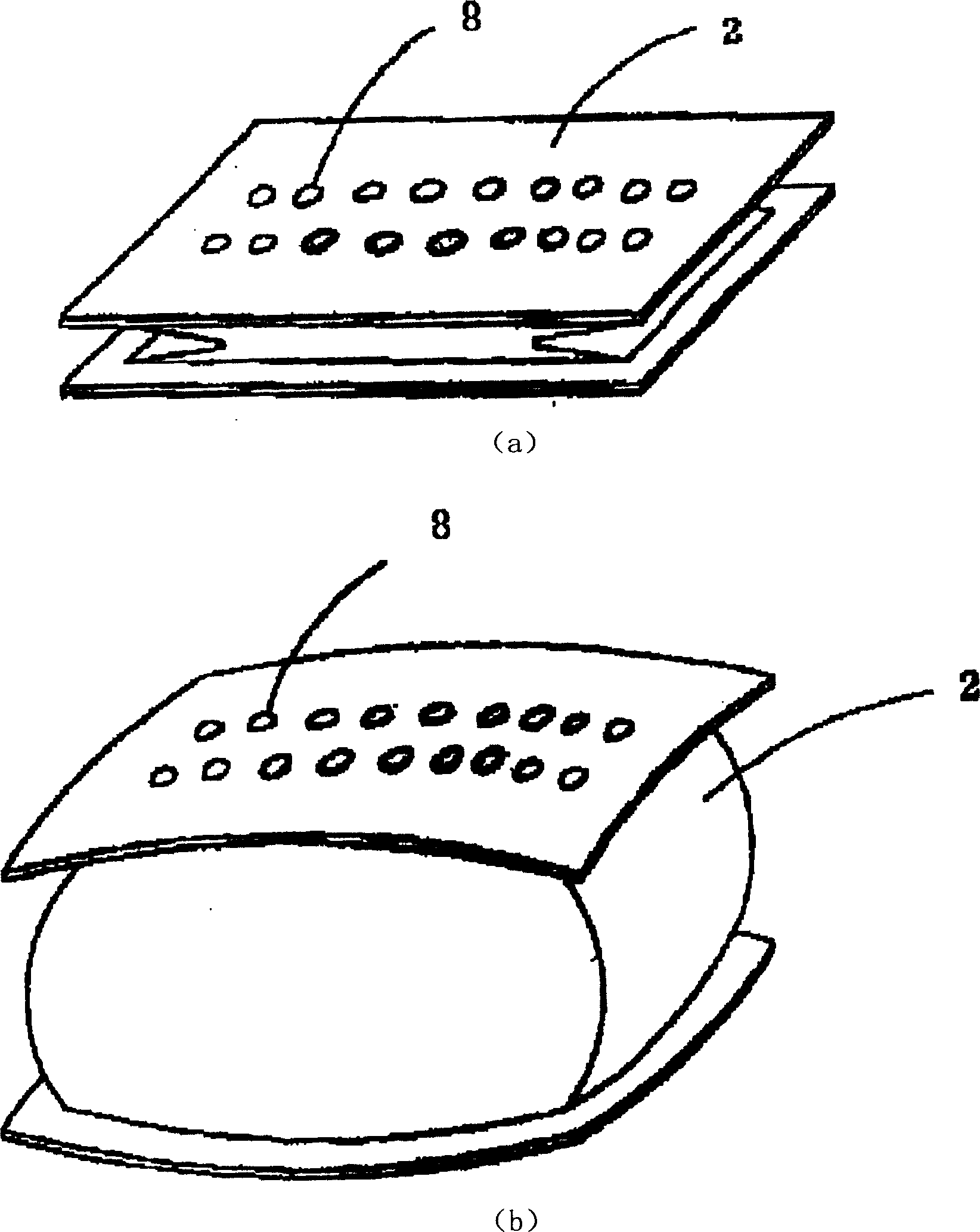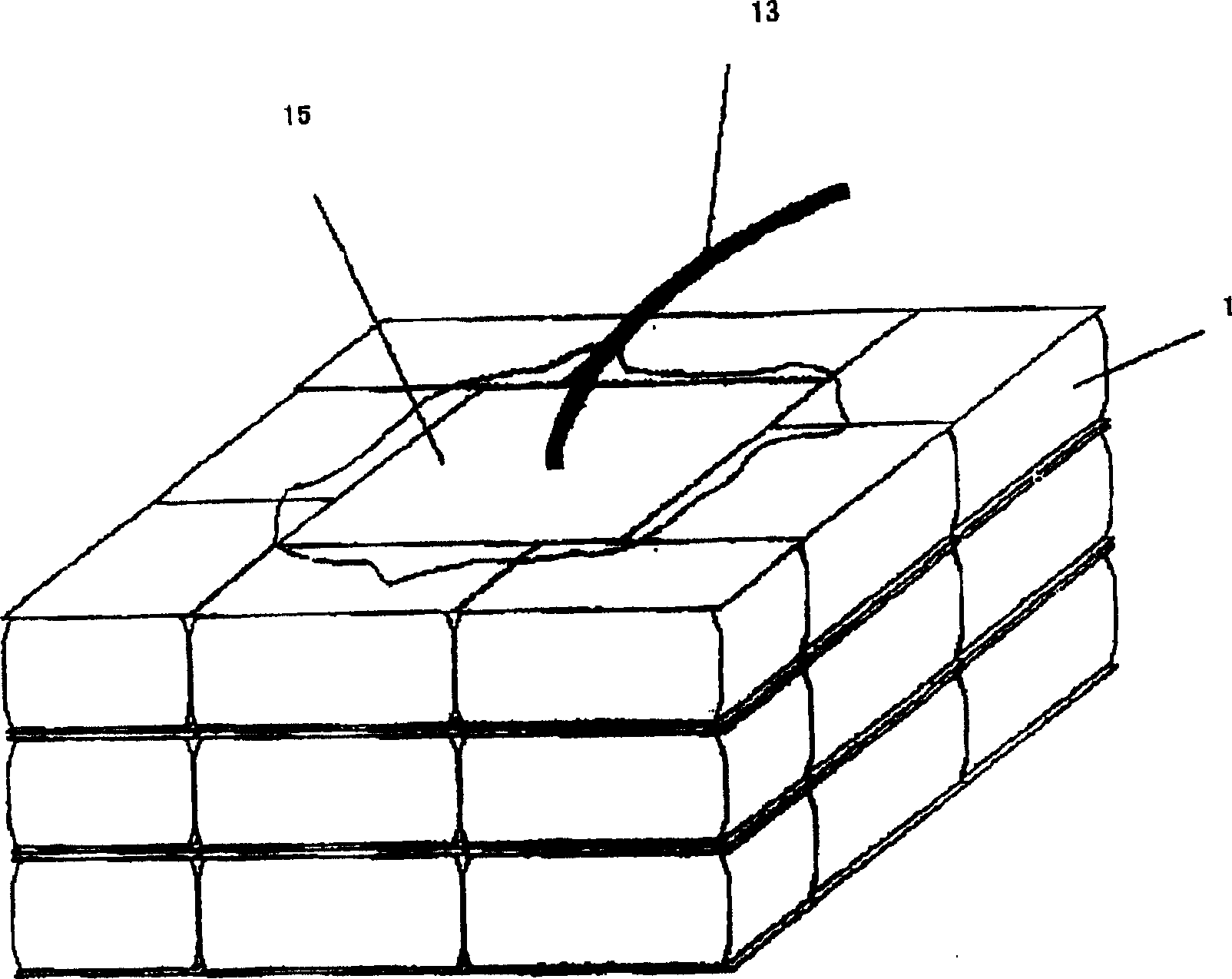Water swelling water stop material
A technology of swelling and water interception, which is applied in water conservancy projects, sea area projects, construction, etc., and can solve problems such as water leakage, unstable accumulation state, and collapse of sand bags
- Summary
- Abstract
- Description
- Claims
- Application Information
AI Technical Summary
Problems solved by technology
Method used
Image
Examples
manufacture example 1
[0164] 230 g of acrylic acid, 133 g of a 48% aqueous sodium hydroxide solution, 1.0 g of pentaerythritol triallyl ether, and 636 g of water were added to a 1-liter beaker, and cooled to 10°C. This solution is put into adiabatic polymerization tank, feeds nitrogen gas, after making the dissolved oxygen of solution reach 0.1ppm (manufactured by Oriental (Oriente) Electric Company, trade name: dissolved oxygen meter D0220PB is measured), add 35% hydrogen peroxide aqueous solution 0.023g, 0.00575g of L-ascorbic acid, and 0.23g of potassium persulfate. The polymerization started in about 30 minutes after the addition and reached a maximum temperature of 72°C after about 2 hours. Then, it was aged at this temperature for 5 hours to complete the polymerization. The polymer thus obtained has the form of a hydrogel. This polymer is finely chopped with a blade sand mixer (manufactured by Iriesho Corporation, trade name: BENCH KNEADER PNV-1, rotation speed 70rpm), and mixed with 50% so...
manufacture example 2
[0166] In Production Example 1, after drying and pulverizing, 2.5 g of finely pulverized silica (Ceresia 250 (Syrisia), manufactured by Fuji Silesia (Silisia) Chemical Co., Ltd., average particle diameter 2.7 μm) was added, and uniformly mixed with a Nauta mixer , to obtain an average particle size of 370 μm, a swelling speed of 21 seconds, a water absorption of 550 g / g, a water retention / water absorption of 0.78 and a gel modulus of elasticity of 5×10 3 N / m 2 . Water-absorbent resin A(ii) having a water-soluble component content of 7% by mass, a residual water-soluble monomer content of 85 ppm, and a moisture clogging resistance of 3%.
manufacture example 3
[0168] 0.29 g (0.04 mol) of acrylic acid, 0.33 g of a 48% aqueous sodium hydroxide solution, 278.4 g (1.96 mol) of a 50% acrylamide aqueous solution, and 278 g of water were added to a 1-liter beaker, and cooled to 5°C. Put this solution into the adiabatic polymerization tank, pass into nitrogen, after the dissolved oxygen of solution reaches 0.1ppm, add 35% hydrogen peroxide aqueous solution 0.0001g, L-ascorbic acid 0.00005g, and 4,4-azo (4-cyano valeric acid) 0.025g. It took about 30 minutes after the addition to start the polymerization reaction, and after about 5 hours, the maximum temperature reached 75°C, and the polymerization was completed. A hydrogel-like polymer is obtained.
[0169] After pulverizing the gel with a meat grinder, it was dried at 120° C. for 1 hour with a belt dryer (ventilated dryer, manufactured by Inoue Metal Co., Ltd.) and pulverized to obtain an uncrosslinked dry powder with an average particle diameter of 500 μm. Take 100g of the uncrosslinked...
PUM
| Property | Measurement | Unit |
|---|---|---|
| The average particle size | aaaaa | aaaaa |
| Water absorption | aaaaa | aaaaa |
| The average particle size | aaaaa | aaaaa |
Abstract
Description
Claims
Application Information
 Login to View More
Login to View More - R&D
- Intellectual Property
- Life Sciences
- Materials
- Tech Scout
- Unparalleled Data Quality
- Higher Quality Content
- 60% Fewer Hallucinations
Browse by: Latest US Patents, China's latest patents, Technical Efficacy Thesaurus, Application Domain, Technology Topic, Popular Technical Reports.
© 2025 PatSnap. All rights reserved.Legal|Privacy policy|Modern Slavery Act Transparency Statement|Sitemap|About US| Contact US: help@patsnap.com



